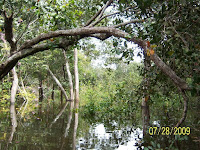Tropical trees and hardwoods have outperformed the stock markets since before the 1940’s. Can you say the same thing for your portfolio? All you have to do is go to a lumber yard that deals in tropical hardwoods and check out the board foot prices to realize that this is a commodity like no other. Even on sale or with a special discount most hardwoods are almost unaffordable. What are the economic factors that make tropical trees so valuable? Simply put, the answer can be broken down into three main points:
- Every year there are more and more people on our planet eager to consume wood products for: construction, furniture, pulp and paper and fuel, to name just a few wood uses.
- Every year there are fewer and fewer natural forests accessible to loggers, making demand exceed supply in many instances.
- Tree plantations and wood lots have to compete with urban areas and agricultural uses for available land, restricting the number of plantations that grow hardwood trees.
Tropical trees have appeal around the planet. Potential markets are not restricted to just one or two regions, but rather extend to every continent on the planet. Even when the economy in North America is in recession, China and India are buying. Many regions have virtually no or scarce lumber resources, such as North Africa and the Middle East, India, Pakistan and China. Some regions have few hardwood resources that can be grown in economically feasible time periods, being instead limited to softwoods, such as most of Europe, Russia, Canada and much of the United States. Visit Amazonia Reforestation for more information at http://www.myreforestation.com/.













